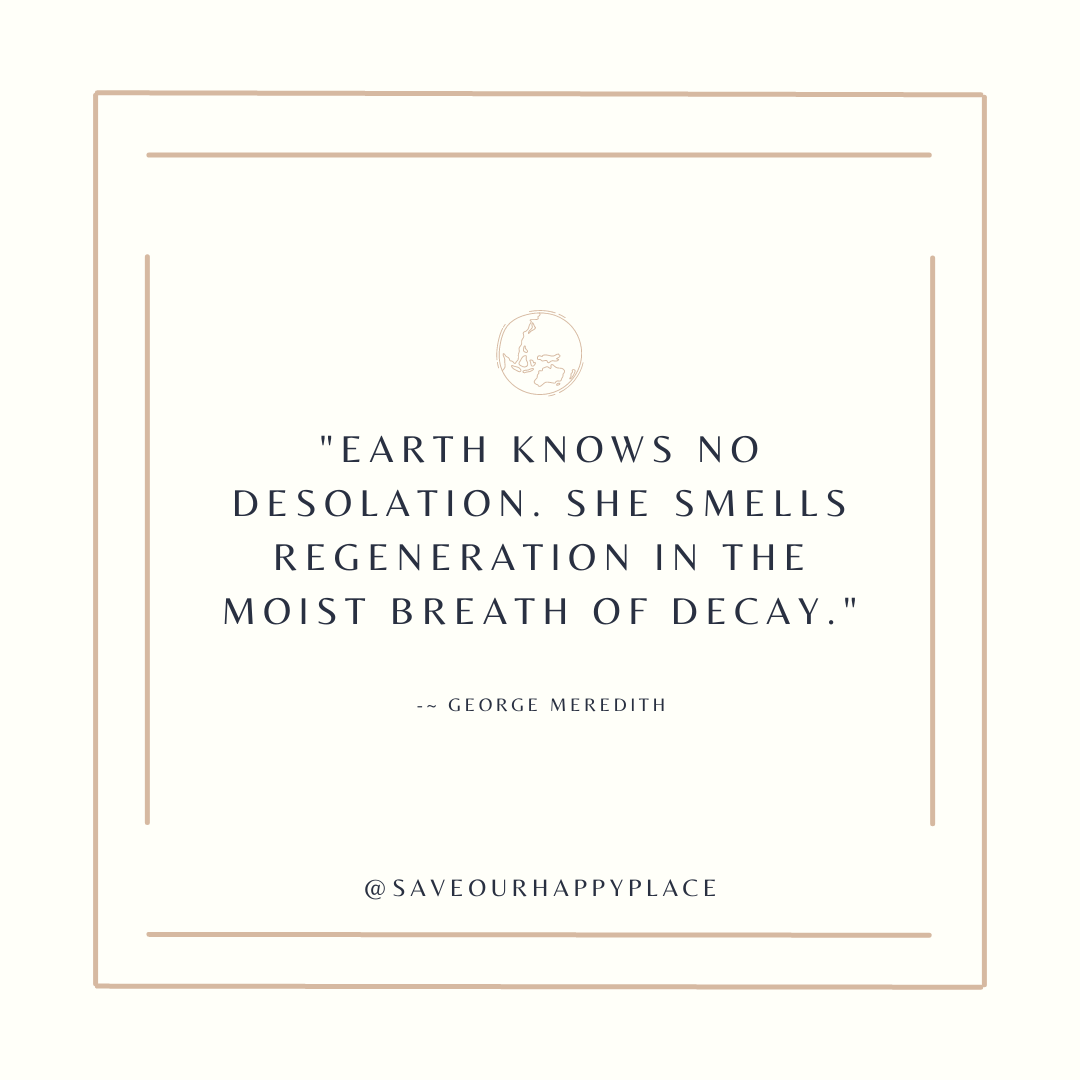Giving Back to the Earth
How to Inspire Composting on a Greater Scale
Save Our Happy Place is a climate action newsletter dedicated to making it easy for you to help protect the places you love from climate change, written by Lindsay Nunez. Read on for simple yet effective climate actions, and sustainable + eco-friendly lifestyle tips.
💚 SOHP is ad-free. We are community funded. If you enjoy our content, upgrade to a paid subscription.
Hey there sunshine! Welcome back to Save Our Happy Place. This week we are diving into one of my favorite sustainable living practices: composting. Not only does it help the climate crisis by mitigating greenhouse gas emissions, but it also has the power to help you to connect to nature and your community while rejuvenating green spaces.
We All Have to Eat
Your Food Scraps & Their Environmental Impact
The EPA estimated that U.S. food loss and waste each year embody the same CO2 emissions of 42 coal-fired power plants. This does not include the carbon footprint that went into creating, packaging, and distributing the food before it ends up in the landfill. Globally, food waste makes up 8% of greenhouse gas emissions and is the most common material found in landfills.
Ultimately, we all have to eat - making the creation of food waste hard to avoid. There are many ways to reduce food waste, but today we are looking specifically at composting. This activity can hit on both sides of the activism spectrum, giving you personal actions to take and ways to prompt a systemic response.
Composting is the natural process of recycling organic matter, such as leaves and food scraps, into a valuable fertilizer that can enrich soil and plants.
Why compost?
Reduces the waste sent to landfills
Cuts methane emissions from landfills
Improves soil health
Conserves water
Expands your connection to nature by giving back to the earth
Take Personal Action
How to Start Composting
Based on where you live and what you already have access to, there are a few different ways to get started composting.
First, find out if you have access to a nearby community or municipal composting site. Also research your local municipality, community gardens, and farmers markets to check for compost collection.
Out Source Your Compost
At least 27% of the US population has access to a composting program that accepts either only food waste or food waste plus compostable packaging.
If you have access to municipal composting
Be sure to double-check what types of material are greenlit for composting with your city. Many of these take all food waste and compostable packaging materials or other consumer goods. Those are typically not accepted in gardens because they need to be heated.
If you have access to a community garden
Join the garden! It is a beautiful way to connect with nature and your community. For composting be sure to check the garden rules. Unlike industrial composting facilities used by municipalities or private companies, gardens typically don’t accept animal byproducts and bioplastics because they need to be heated.
Think a community composting project would be a good fit for your community? Check out this guide:
In between drop-offs or picks up, I recommend storing your compost in a stainless steel compost bin. If you have ample freezer space, you can also freeze your scraps.
Make Your Own Compost
If you have a backyard
Depending on the size compost bin you pick out, you only need a few extra square feet of outdoor space to get your home backyard composting system set up. Check out the guide below to get started.
If you have minimal outdoor space
Even if you don’t have access to any of the above and have little to no outdoor space, there is an option for you. Cue the worm farm! Even if this option of creepy crawlies doesn’t seem appealing to you, it is a beautiful way to bring nature and regeneration into your home.
In addition to the amazing climate benefits of composting, making your own compost has many functional uses including using it as mulch, adding it to potting soil, potted plants, crop or garden beds, and distributing it on lawns or around fruit trees. It is also a beautiful way to connect more deeply to nature and elevate your gardening.
Take Systemic Action
Demand Compost Infrastructure
Aside from environmental / climate benefits, municipal-level composting has huge cost savings potential for your town. In 2017, the United States generated more than 267 million tons of municipal waste and paid around $55 per ton resulting in billions of dollars on solid waste management. Now imagine the cost saving from cutting out 1/3 of landfill waste by composting instead.
Help kick-start interest in municipal composting by lobbying your city council members. You can do this by calling, emailing, setting up in-person meetings, or attending town halls. Be sure to include all the amazing benefits of composting listed above.



